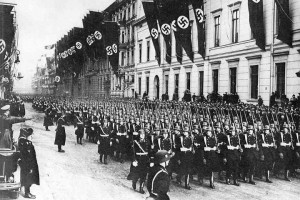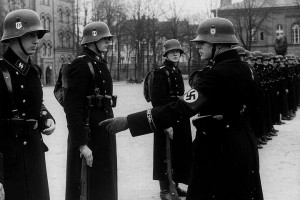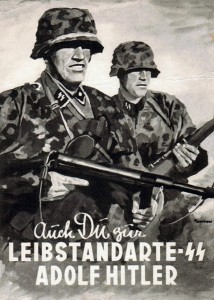 The Leibstandarte or, to give its full name, the Leibstandarte SS Adolf Hitler (LSSAH), was the first and is probably the most well-known of the seven premier Waffen-SS Panzer divisions. At the end of the Second World War in 1945 the Leibstandarte had become a fully-fledged armoured division with more than its fair share of popular personalities, Michael Wittmann among them; this was indeed a far cry from its more humble beginnings during the dark times that was Germany in the 1920s.
The Leibstandarte or, to give its full name, the Leibstandarte SS Adolf Hitler (LSSAH), was the first and is probably the most well-known of the seven premier Waffen-SS Panzer divisions. At the end of the Second World War in 1945 the Leibstandarte had become a fully-fledged armoured division with more than its fair share of popular personalities, Michael Wittmann among them; this was indeed a far cry from its more humble beginnings during the dark times that was Germany in the 1920s.
Politics in Germany during both the period after the end of the First World War and the 1920s was for the most part a perilous affair, with leaders and speakers often being threatened by opposition strongarm groups; to combat any potential threat, many of the main factions both on the left and right of the complicated German political spectrum created bodyguard detachments composed of their most loyal followers to maintain order in meetings and protect speakers. The fledgling Nazi party was no different in this respect, and in March 1923 the Stabswache or Headquarters Guard was formed, led by two of Hitler’s early stalwarts, Josef Berchtold and Julius Schreck. Two months later, this small group was provided with the more belligerent sounding monicker Stosstrupp Adolf Hitler, or “Adolf Hitler Shock Troops”.
Birth and Development: 1923-39
November 1923 was to signal the beginning of what was something of a lean time for Hitler and the Nazi Party, following the dismal failure of their attempted coup in Munich, the so-called Beer Hall Putsch. Hitler was jailed, and the NSDAP – and the Stosstrupp with it – were disbanded on the orders of the government. By 1925 however Hitler had been released, and the NSDAP was quickly revived as a political force; the erstwhile Stosstrupp was also renamed, to Schutzstaffel, or “protection squad” – abbreviated to SS. As opposed to the street gangs of the Sturmabteilung or SA – the original Stormtroopers and the party’s real “motivators” on the streets – the SS remained an élite group, and by 1929 it consisted of less than three hundred men. The leader of the unit by this time was the former agronomy student and chicken breeder Heinrich Himmler, who assumed the new rank of Reichsführer-SS.
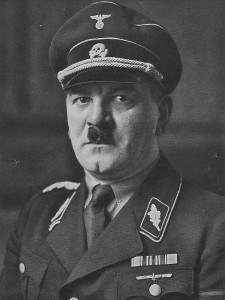 |
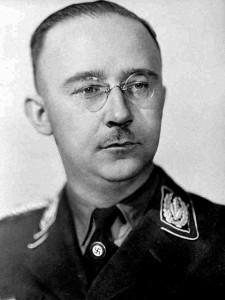 |
After 1929 the SS began to expand rapidly, and standards in personnel not surprisingly began to lower. This slide was arrested early in in 1933 after Hitler had been elected Chancellor of Germany, when a review was carried out on all existing members. The political changes also led Hitler to call for the creation of a dedicated guard formation from the ranks of the SS, and instructed one of his oldest colleagues, First World War veteran Josef “Sepp” Dietrich, to set the wheels in motion. Dietrich quickly set about selecting a group of men applying rigorous standards, and by the spring of 1933 had established the SS-Stabswache Berlin, consisting of 117 men.
The primary role of this new Stabswache was the guarding of the Reich Chancellery, and as a result they were quickly given the nickname “asphalt soldiers”. Of course, none of the unit’s detractors would have known that of these initial 117 men, over sixty were to become company commanders or above, with three becoming divisional commanders.
Not long after this the designation of the formation had been changed to SS-Sonderkommando Berlin, and included a motorised company. Two more SS-Sonderkommando were formed during this period, at Zossen and Jüterbog. The SS-Sonderkommnado Zossen was soon absorbed into the SS-Sonderkommando Berlin, swelling it to regimental size, and on 3rd September 1933, the newly amalgamated SS-Sonderkommando was renamed the Adolf Hitler-Standarte. A month afterwards, the new formation increased in size further when it was merged with the SS-Sonderkommando Jüterbog.
The entry standards for the Leibstandarte were tightened to the point of being too draconian, arguably even ridiculous; proof of ancestry had to go back to 1800 – 1750 for officers – and men with even a single filled tooth were turned away by the recruitment offices, often being passed onto the “lesser” SS-VT (SS-Verfügungstruppe) or the notorious Totenkopfverbände, where entry standards were considerably less strict. At the same time moves were also made to turn the unit into a fully motorised regiment. By November 1933, on the tenth anniversary of the failed Putsch, the unit received its final name change, becoming the Leibstandarte Adolf Hitler, responsible for and to Adolf Hitler alone. It was the final chapter in the birth of what was to become one of the most respected and feared military units in Nazi Germany.
From its inauguration as the Leibstandarte Adolf Hitler in November 1933, the unit steadily began to increase in size, and by March the following year the unit had a total strength of just under a thousand men, divided into seven companies. During this period the unit also began to take in graduates from the new training school which had been set up in the Bavarian town of Bad Tölz. One of the first recruits from Bad Tölz was one Kurt Meyer, who was later to become one of the division’s most respected and popular commanders.
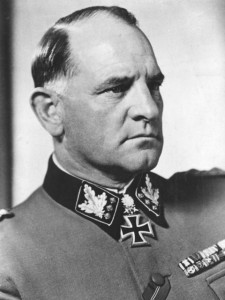 |
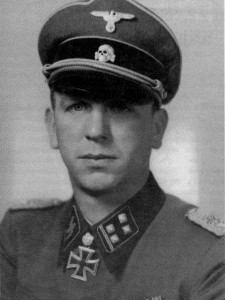 |
In April 1934 the unit’s official title was changed slightly with the inclusion of the initials “SS”, making it the Leibstandarte SS Adolf Hitler, or LSSAH. During this period of organisation and reorganisation, unit commander Sepp Dietrich also succeeded, against the will of Himmler, in having the Leibstandarte recognised as a military rather than a political formation.
In spite of Dietrich’s intentions, the Leibstandarte was to play a key role in what was probably the most significant political upheaval to take place within the Nazi leadership during the 1930s, the so-called “Night of the Long Knives”, which saw the SS supplant the SA as the most powerful paramilitary force in Germany. Dietrich himself was involved in the arrest and murder of SA leader Ernst Röhm, an act for which he was sentenced by the German courts more than twenty years later. By the beginning of 1935 the Leibstandarte had over two and a half thousand men.
1935 was to see the Leibstandarte develop rapidly as a military unit, helped in no small part by Hitler’s decree of 2nd February which stipulated that Leibstandarte personnel were to be treated in the same way as members of the Army, up to including their being made combat ready. Equality with the other armed forces was formalised not long afterwards when the men of the Leibstandarte (and SS-VT) were put on the same pay scale and given the same status as far as military service obligations were concerned. In what can be seen as its first “mission”, the men of the Leibstandarte marched through the town of Saarbrücken in the once occupied Saarland on 1st March 1935, the first German soldiers to do so since the end of the First World War.
By the summer of 1935 the new “military” formations of the SS were given field grey uniforms similar to those worn by the regular Heer. The men of the LSSAH were also presented with the distinctive “LAH” shoulder cypher, which was to distinguish the members of the Leibstandarte from the other units of the SS-VT and later Waffen-SS. The unit was also awarded its special cuffband, which simply contained the name “Adolf Hitler” in traditional Sütterlin script. Meanwhile, the unit continued to serve in its initial role of guarding the Chancellery and providing an honour guard for the Führer, and also played a role during both the Winter and Summer Olympic games the following year. During these events, the traditional black uniform was worn, complete with distinctive white leather parade equipment.
By 1937 the Leibstandarte was recognised by many as an élite formation, and large numbers were clamouring to join its ranks. Among these would be the twenty-two year old Michael Wittmann, who was accepted into the Leibstandarte training school at Berlin-Lichterfelde in April of that year.
Military exercises and outings became more frequent, and the men of the LSSAH mixed this intense military training with their duties as Hitler’s guard of honour at major political, social and cultural events, from the Bayreuth Festival through to the march past following the annexation of Austria (Anschluss) in March 1938.
Michael Wittmann would play his part and would be awarded the Anschluss medal, and just over six months later would be awarded with the Sudetenland medal as the Leibstandarte joined the march into the disputer border region and then into Czechoslovakia.
By 1st September 1939 and the German invasion of Poland, the ranks of the Leibstandarte had expanded to an overall strength of some 3,700 men divided into four infantry battalions complete with supporting artillery, reconnaissance and anti-tank units. The men of Germany’s new élite unit were now ready for what would the beginning of their greatest challenge: the Second World War had begun.
The Bitter Struggle: 1939-45
After war had been declared in September 1939, the Leibstandarte would be ready – and willing – to be thrown headlong into the heat of battle. The unit played a significant role during the invasion of Poland, and as a reward for its success was expanded further during the latter part of 1939 and the first half of 1940. Prior to the invasion of France and the low countries in the late spring of 1940, the Leibstandarte had been upgraded to a fully-fledged motorised infantry regiment, and was equipped with the latest Pz. Kpfw. IV tanks.
In spite of their reputation as a show force (a thought more than likely motivated by jealousy on the part of their counterparts in the regular SS-VT) the Leibstandarte were quick to jump into the breech, and it was indeed a member of the unit’s 3rd battalion, SS-Obersturmbannführer Hugo Kraas, who was awarded the first Iron Cross of the Netherlands campaign following his swift advance and subsequent capture of a significant number of enemy prisoners.
The picture was not all one of guts and glory, however. During their first forays in Poland, men of the Leibstandarte had found themselves embroiled in an incident concerning the massacre of fifty Jews in a synagogue, and the following year the 7th Company of the 2nd Battalion were responsible for the shooting of a number of British prisoners near the northern French town of Wormhoudt. As quickly as the unit picked up its reputation for ferociousness on the field of battle, it was also to become notorious for its zealous fanaticism. In addition, the unit had suffered a high casualty rate, no doubt due to over-enthusiasm in the field. Harsh lessons were to be learned, and the Leibstandarte was no different in this respect.
The battlefield performance of the LSSAH had been closely followed by the man whose name it honoured, and by August Hitler had authorised its expansion to brigade strength. By the time of the invasion of the Soviet Union in June 1941, the (now) SS Division Leibstandarte SS Adolf Hitler would have an overall strength of just under eleven thousand men, and a leadership steeled by tough combat both in the West and in the Balkans and Greece – where one of the unit’s legendary leaders, SS-Sturmbannführer Kurt “Panzer” Meyer, had displayed exemplary bravery in overcoming a seemingly impossible situation. In what was to become something of a legendary story, Meyer would single-handedly motivate his men to take the dangerous Klissura Pass and in the process overrun a stout Greek defence, an action for which he was awarded the coveted Ritterkreuz, or Knight’s Cross.
From 1941 through to the early part of 1944, the Leibstandarte was to witness a dramatic change in fortunes. The initial enthusiasm of the Russian campaign had long since waned, and the unit found themselves involved in the most fierce battles, and a vicious and equally fanatical enemy. In spite of the worsening if the situation (or perhaps because of it) the Leibstandarte – and the Waffen-SS as a whole – would remain steadfast and resolute. The fires of war and the intensity of combat had changed the face of the division: no longer were they the “Asphalt Soldiers”.
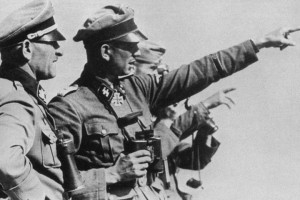 |
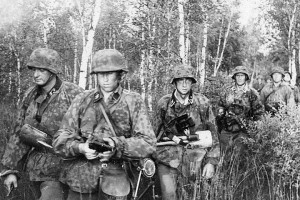 |
During this period the unit had expanded further still, and was reclassfied along with a number of other Waffen-SS (formerly SS-VT) formations – first as the SS Panzergrenadier Division LSSAH in late 1942 and then as a full Panzer division, the 1st SS Panzer Division LSSAH, the following year. It now had a strength of over twenty thousand men. As before, the Leibstandarte continued to be equipped with the highest standard of arms and armour, including the powerful Tiger I tank, a fearsome machine in which Michael Wittmann was to make his reputation.
The war in the East was relentless, bitter and brutal: massacres were committed as a matter of course, and everyone played their part. The men of the Leibstandarte were to experience some of the most significant battles of the entire war, including the battles of Khar’kov and Kursk, the latter being the biggest tank battle in history.
In the spring of 1944 the Leibstandarte was finally moved westwards, and while the bitter fighting in Russia had taken its toll on its numbers, the steely ardour remained. All that had changed were the uniforms of the enemy and temperatures a few degrees more comfortable. By the time of the campaign in Normandy during the late spring and summer of 1944, the existing Leibstandarte and the 12th SS Panzergrenadier division Hitlerjugend (the only other formation to bear Hitler’s name) were merged into what was to become the I. SS Panzer Corps, Leibstandarte. The 12th, popularly known as the “baby” division on account of the average age of its men, had a close relationship with the LSSAH, in that many of its senior commanders had blooded themselves in the ranks of the LSSAH. These men included its commander Fritz Witt and aforementioned Kurt Meyer and Hugo Kraas.
The campaign in Normandy was to see the men of the newly-formed I. SS Panzer Corps continue as they had done before, at times stretching the boundaries of the impossible in their quest to stem the tide of the Allied advance. The most notable example was, of course, the spectacular single-handed action taken by the subject of this site, Michael Wittmann, at Villers-Bocage on 13th June. By August however Wittmann had been killed in action, and the men of the Leibstandarte were to find themselves shunted around to the different areas in the rapidly decreasing Nazi empire.
In December 1944, the LSSAH found itself in the wintry Ardennes, poised to spearhead what was seen by many as Hitler’s last gamble in the West. Along with a number of re-jigged Waffen-SS formations, the LSSAH had by now been reformed into smaller, fast-moving Kampfgruppen or “battle groups”, another innovative move that proved the leadership of the Waffen-SS to be way ahead of its peers in terms of military strategy and innovation.
After a brief initial success, the German counterattack was slowed down by both a redoubtable enemy and a change in weather conditions, but not before the Kampfgruppe under the legendary SS-Obersturmbannführer Joachim “Jochen” Peiper had succeeded in making rapid progress. Again, this success was counterbalanced by controvery, for at the Baugnez Crossroads, in the vicinity of the town of Malmédy, a number of American prisoners had been summarily shot by members of Peiper’s battle group. Although Peiper himself had not been present, it was his head that was called for during the postwar trials. (An initial death sentence would later be commuted after his serving five years in prison, largely due to statements from adversaries).
The failure in the West was not to be the last action of the LSSAH in spite of the heavy losses it would sustain; during the closing weeks of the war in early 1945 Hitler was to dispatch his most reliable men to Hungary, sending many of his best men in what was to be a last hurrah against their fiercest enemy. Even after the battering the unit had taken in Belgium and the constant whittling away of manpower, armour and the loss of their most experienced commanders such as Theodor “Teddi” Wisch and Fritz Witt, the men of the Leibstandarte continued to display an incredible fighting spirit; far from being typical “greens”, new recruits to the unit were to prove to be just as able as the men they had replaced.
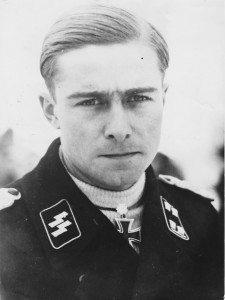 |
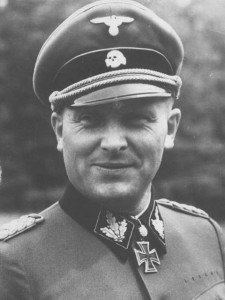 |
That such a spirit remained remained right until the very end cannot be measured in terms of fanaticism alone; the men were Sepp Dietrich’s “boys”, and the unit had over the years acquired a hierarchy closer to that of a family rather than a purely military formation. Here, the “Band of Brothers” also included the Colonels and Generals, often distant figures in both the Wehrmacht and the Allied armies. There was a mutual respect between officers and men, and the idea that officers sat back at the rear while the rank and file did all the fighting was virtually unheard of. It was this mode of thinking that created officers who led from the front, men who would rather go down fighting than stick pins in maps on walls.
It was however this mentality that was to lead to Michael Wittmann jumping back into his Tiger and his eventual death, when taking the desk job that had been offered to him might well have guaranteed his survival. But then such shirking did not play a part in the warrior code that drove the men of the Leibstandarte, or the Waffen-SS as a whole for that matter.
In a dramatic period early in the spring of 1945, the reformed I. SS Panzer Corps succeeded in driving the Soviets back, destroying seven full infantry divisions in the process. But as before, the sheer number of enemy troops was to overwhelm Dietrich’s forces, until there was little left of the once-proud division. In a desperate measure to save his remaining loyal men and with the Soviets poised to advance on Vienna, Dietrich took what was the only the logical step and decided to retreat.
With his unit on its last legs having been pushed back into Austria by the rapidly advancing Red Army, Sepp Dietrich was to face what was a humiliating rebuff from his leader. By now paranoid and probably convinced that the Leibstandarte was ready to strike at Moscow, Hitler condemned his once loyal friend as a traitor, and with it condemned the division that had sacrificed everything in defending his name. In what could only be termed as a final insult, those who remained were ordered to remove their decorations, among them the once coveted “Adolf Hitler” cuffband.
In its short and turbulent life, the Leibstandarte had suffered terrible losses, and the division had been almost completely destroyed a staggering half-dozen times. But even then the story was not over, with many more becoming part of the faceless mass that populated the Soviet Gulags until well into the 1950s. Of those who did manage to return home, many ended up being treated as social pariahs, while others who had milked the system for all it was worth – including many in the German upper classes who had been so quick to adopt senior positions in the Allgemeine SS when the going was good – were able to get back to their lives as if little or nothing had happened.
Nothing simple can be said in conclusion: for all their matchless bravery, the connection between the men of the Leibstandarte and the man whose name they proudly bore on their uniforms creates something of a moral stain that is difficult to remove. It is one of the many legacies that the Leibstandarte leaves behind, complementing the stirring tales of military élan and fearlessness under fire. Like the tale of many a warrior band, it would be a tragic end to a tragic tale.
“Their Honour was Loyalty”

